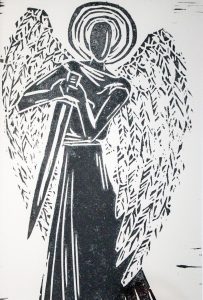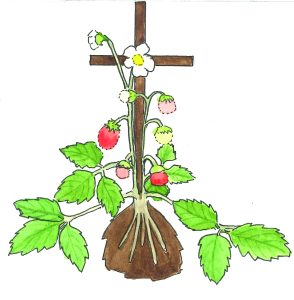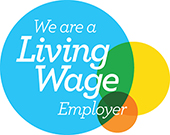Art Exhibition aims to raise the survivor voice
An exhibition featuring artists who have lived experience of abuse is taking place at Truro Cathedral in March.
 ‘If I told you, what would you do?’ will run from March 7 to March 22 and features nine artworks and a musical piece by two artists – Sarah Troughton and David Creese.
‘If I told you, what would you do?’ will run from March 7 to March 22 and features nine artworks and a musical piece by two artists – Sarah Troughton and David Creese.
The exhibition, which is a joint initiative by Truro Cathedral and the Diocese of Truro, started life in a joint project between Safe Spaces and the Diocese of Newcastle.
The show’s purpose is to promote the physical, psychological, and spiritual wellbeing of those who have experienced trauma and abuse in the church. Its aim is to enable those visiting the exhibition to develop compassion and competence in how we hear, stand alongside, and respond to those who have such experiences.
David said: “It’s wonderful that the Diocese of Truro and Truro Cathedral have embraced this project so warmly. I’m greatly encouraged by their welcoming response to our initiative, and I hope that the exhibition and the accompanying resources will inspire and support all those who are looking for ways to make Christian communities in Cornwall safer for people, like us, who have experienced abuse in the church.”
 The Rt Revd Philip Mounstephen, Bishop of Truro, said: “We are working hard to ensure that safeguarding is a key priority right across our diocese and giving a platform to survivors and their voice is central to that. We hope this exhibition will inform and educate us and challenge visitors coming to see the artworks. We are extremely grateful to the artists, Safe Spaces and the Diocese of Newcastle for giving us the opportunity to host the exhibition here.”
The Rt Revd Philip Mounstephen, Bishop of Truro, said: “We are working hard to ensure that safeguarding is a key priority right across our diocese and giving a platform to survivors and their voice is central to that. We hope this exhibition will inform and educate us and challenge visitors coming to see the artworks. We are extremely grateful to the artists, Safe Spaces and the Diocese of Newcastle for giving us the opportunity to host the exhibition here.”
Dean of Truro, The Very Simon Robinson, said: “It is an honour to host this important exhibition which will rightly challenge us and anyone who comes into the cathedral to see the artworks of survivors. Safeguarding must be at the heart of our life as the church and in society. I echo Bishop Philip’s words, listening to the voices of survivors is central to understanding how important safeguarding is.”
The exhibition runs from March 7 – March 22, 10am – 5pm Mondays – Saturdays, 12pm – 4pm Sundays (events depending). Entry is free and all are welcome.
Why Strawberries?
 Those who have experienced abuse in the church often feel (or are made to feel) of little value. Valuing them for who they are right now means seeing them not as we (or they) might wish them to be, but as God sees them. This means recognising life and growth in all ways, not just in ways we are accustomed to valuing.
Those who have experienced abuse in the church often feel (or are made to feel) of little value. Valuing them for who they are right now means seeing them not as we (or they) might wish them to be, but as God sees them. This means recognising life and growth in all ways, not just in ways we are accustomed to valuing.
The emblem we chose to represent this idea is the strawberry plant. At all points in their life cycle, strawberry plants are productive: when they have only leaves, they are taking nourishment from the sun for growth and vigour; when they have flowers, they are preparing for a time of fruitfulness; when they are in fruit, they nourish others. Sometimes they have flowers and strawberries at the same time; sometimes they have neither, but at those times they might be sending out runners to create a new plant. And all this productivity comes from growth out of muck — not despite the muck, but because of it, as Sarah finds on her allotment. We chose the strawberry plant to symbolise this growth: we are thriving because of the muck that has happened to us, and we are using it positively.
In the strawberry plants so beautifully painted for us by artist Heulwen-Marina Carrier, the muck is as prominent as the leaves, runners, flowers and fruit. The strawberry design does not minimise the bad things that have happened to so many of us in the church, but it also asks: can we make some good out of a bad thing?




